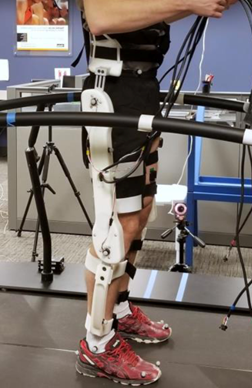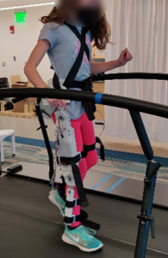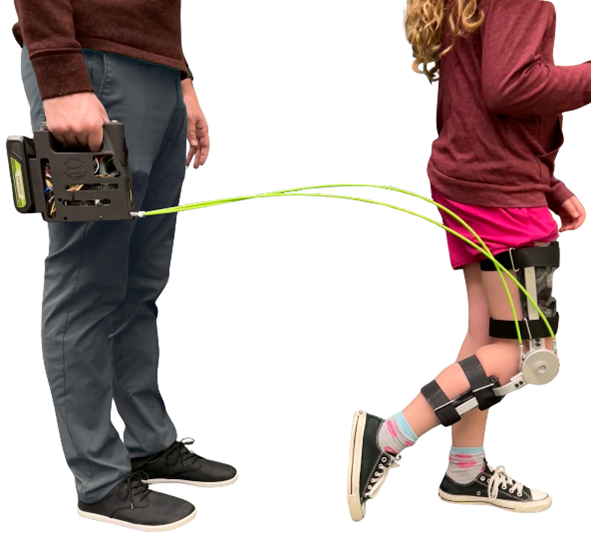Hardware Development
Anthropometrically Parameterized Lower-Limb Exoskeleton

The Anthropometrically Parameterized Lower-Limb Exoskeleton was a bilateral hip-knee device, with each joint containing a custom actuator cassette. The frame consisted of rigid, 3D-printed linkages that could be customized to fit individual patients. The belted three-stage actuator weighed 0.60 kg and delivered up to 4.2 Nm of continuous torque, 17.2 Nm of peak torque, and speeds of 480 deg/s.
V2 Exoskeleton

The V2 Exoskeleton also consisted of a bilateral hip-knee device, but with an improved joint actuator. Rather than requiring a custom frame for each user, this device featured an adjustable frame that was modified to fit the anthropometrics of pediatric users. The chain-cable hybrid two-stage actuator weighed 0.45 kg and delivered 5.9 Nm of continuous torque, 21.1 Nm of peak torque, and speeds up to 1176 deg/s.
Cable-Driven Joint System

The Cable-Driven Joint System aimed to reduce exoskeleton weight by removing the actuator motor and gearing from the worn device. A Bowden-cable transmission was used to deliver assistive torques from a mobile, clinician-held actuation unit to a unilateral knee exoskeleton. The driven joint weighed 0.30 kg and provided up to 5.9 Nm of continuous torque, 20 Nm of peak torque, and speeds up to 410 deg/s.
